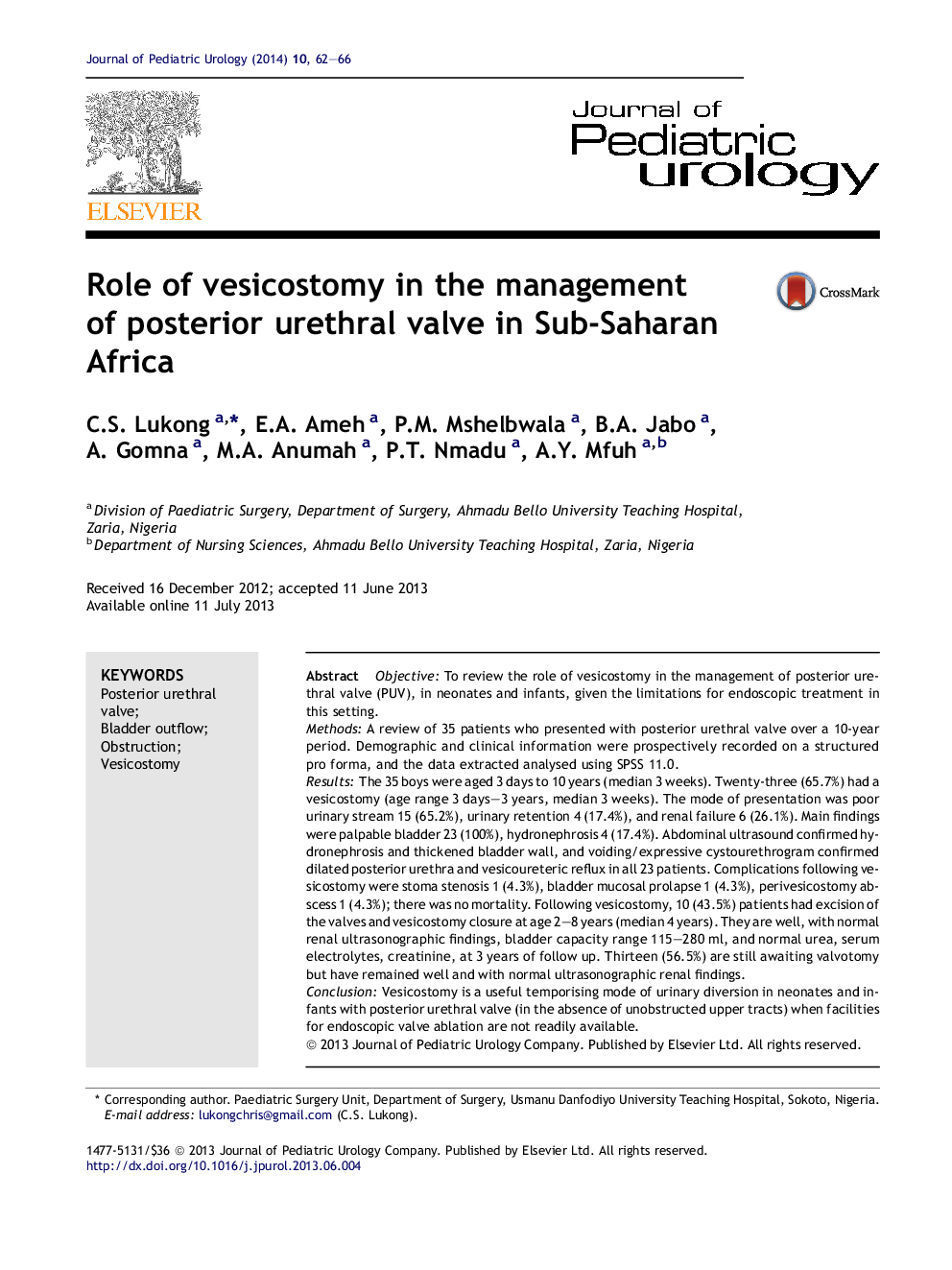| Article ID | Journal | Published Year | Pages | File Type |
|---|---|---|---|---|
| 4162960 | Journal of Pediatric Urology | 2014 | 5 Pages |
ObjectiveTo review the role of vesicostomy in the management of posterior urethral valve (PUV), in neonates and infants, given the limitations for endoscopic treatment in this setting.MethodsA review of 35 patients who presented with posterior urethral valve over a 10-year period. Demographic and clinical information were prospectively recorded on a structured pro forma, and the data extracted analysed using SPSS 11.0.ResultsThe 35 boys were aged 3 days to 10 years (median 3 weeks). Twenty-three (65.7%) had a vesicostomy (age range 3 days–3 years, median 3 weeks). The mode of presentation was poor urinary stream 15 (65.2%), urinary retention 4 (17.4%), and renal failure 6 (26.1%). Main findings were palpable bladder 23 (100%), hydronephrosis 4 (17.4%). Abdominal ultrasound confirmed hydronephrosis and thickened bladder wall, and voiding/expressive cystourethrogram confirmed dilated posterior urethra and vesicoureteric reflux in all 23 patients. Complications following vesicostomy were stoma stenosis 1 (4.3%), bladder mucosal prolapse 1 (4.3%), perivesicostomy abscess 1 (4.3%); there was no mortality. Following vesicostomy, 10 (43.5%) patients had excision of the valves and vesicostomy closure at age 2–8 years (median 4 years). They are well, with normal renal ultrasonographic findings, bladder capacity range 115–280 ml, and normal urea, serum electrolytes, creatinine, at 3 years of follow up. Thirteen (56.5%) are still awaiting valvotomy but have remained well and with normal ultrasonographic renal findings.ConclusionVesicostomy is a useful temporising mode of urinary diversion in neonates and infants with posterior urethral valve (in the absence of unobstructed upper tracts) when facilities for endoscopic valve ablation are not readily available.
